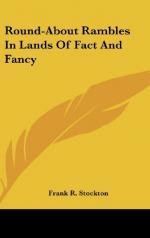[Illustration: TRANSFORMATIONS OF BEETLES.]
But there are insects which do not need the aid of magnifying glasses to show us their beauties.
Some of the Beetles, especially the large ones, are so gorgeously colored and so richly polished that they are imitated, as closely as Art can imitate Nature, in precious stones and worn as ornaments.
There are few living things more beautiful than a great Beetle, glittering in resplendent green and gold, and the girl (or woman either) who will hold one of these in her hand or let it crawl upon her arm while she examines its varied colors, shows a capacity for perceiving and enjoying the beauties of nature that should be envied by those who would dash the pretty creature upon the floor, exclaiming, “That horrid bug!”
There are many insects with which we need not desire to be too familiar, such as Mosquitoes, Fleas, Wasps, and Bees; but when a “bug” is harmless as well as beautiful, there is no reason why we should not treat it as a friend. Who is afraid of a Butterfly?
And yet a Butterfly is really just as much a bug as a Beetle is. The fact is that the term “bug” is applied with a certain propriety to many insects which are not at all pleasant (although the Lightning Bug is an exception), and we should therefore be very careful about giving what has grown to be a bad name to insects that do not deserve it, and should avoid treating such as if they were as ugly and disagreeable as the name would seem to imply.
A BATTLE ON STILTS
[Illustration: A BATTLE ON STILTS.]
In the year 1748 the great Marshal Saxe, who was travelling through the Low Countries, came to the town of Namur in Belgium. There the citizens did everything in their power to make his stay pleasant and to do him honor, and among other things they got up a battle on stilts. These inhabitants of Namur were well used to stilts, for their town, which has a river on each side of it, lay very low, and was subject to overflows, when the people were obliged to use stilts in order to walk about the streets. In this way they became very expert in the use of these slim, wooden legs, and to make their stilts amusing as well as useful they used to have stilt-battles on all holidays and great occasions.
The young men of the town, two or three hundred on each side, would then form themselves into opposing armies, and with flags flying and trumpets blowing they would advance to the attack.
And they fought hard and well. It was against the rule to use any club or similar weapon, or to strike with the fists. Punching with their elbows, to push each other down, and kicking with their stilts, to knock their opponents’ legs from under them, were the methods of assault in this kind of warfare.
The battle often lasted for an hour or two, the armies fighting and shouting, advancing and retreating; while their wives and sisters stood around them, encouraging them by shouts and hand-clapping, and when an unfortunate fellow was knocked down, these women would hasten to his assistance, and help him up again as soon as he had recovered from his fall.




